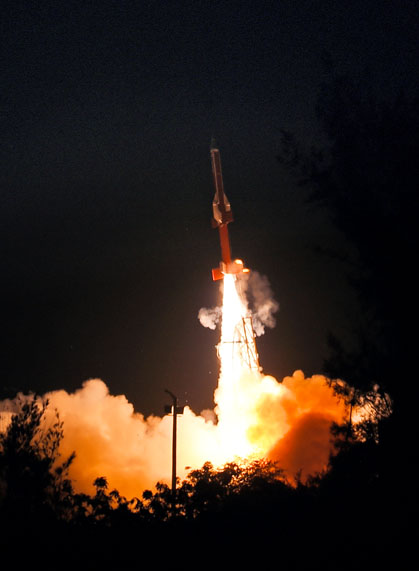ISRO: We all have seen the tremendous success of the Mangalyaan mission. But, are you aware how the orbiter reached space, or about the launch vehicle (rocket).

DO YOU KNOW? The idea of using rockets is centuries old and the only difference is that earlier they were used in wars and today they are used to take the spacecraft outside the Earth to explore the universe. As we dive deeper into the journey of rockets we will understand how these rockets came into existence and also how ISRO began from scratch to the development of heavy mass lifting launch vehicles. To understand any journey, history plays a crucial role. Thus, Let’s begin with the History!!
For many centuries, rockets were used in warfare in various parts of the world. It was the Mysore army that first deployed the most advanced military rockets for war. But later due to the British invasion, the research and development of military rockets were ended in India.
Then came the father of rocketry Dr. Robert Goddard who sent the first liquid-fueled rocket, on March 16, 1926. In 1903, Russian scientist Konstantin E. Tsiolkovsky published the ‘Rocket Equation’. The equation deals with the physics of the rocket-like mass, speed, and propellant (fuel), etc. Now, let’s explore the rockets/ launch vehicles of ISRO.
Birth of Modern age in India
We all are aware that a journey of thousand miles begins with a single step. On November 21, 1963, begins the modern space age in India with a small-sounding rocket launch from Thumba, a small village located on the outskirts of Thiruvananthapuram. We all have heard about the story of our first rocket launch, like how it was launched, the people behind it, and all the hard work that gave birth to India’s Space Program. Now, there is a need for research which lead to the establishment of our national space agency – the Indian Space Research Organisation (ISRO).
ISRO began with the development of sounding rockets under the Rohini Sounding Rocket Programme, which was the bedrock that lead to the development of other launch vehicles such as the SLV, ASLV, PSLV, GSLV, etc. Let’s take a look at these vehicles.

Birth of Modern age in India
Sounding Rockets– They are one or two-stage solid-propellant rockets that are used to study the upper atmosphere and conduct space exploration. Currently, three sounding rockets are operational, which cover a payload range of 10-100 Kg and are used for meteorology and Aeronomy purposes.
Satellite Launch Vehicle or SLV – SLV was the first launch vehicle technology developed to launch satellites. SLV has its successful launch on July 18, 1980 and with this India became the sixth member among other space-faring nations.
Augmented Satellite Launch Vehicle or ASLV – It was designed with a mission to augment the payload capacity to 150 kg, which is thrice that of SLV-3 and it was also proved to be the low-cost mission to validate and demonstrate various critical technologies such as strap-on technology, vertical integration, inertial navigation, closed-loop guidance, etc.
Polar Satellite Launch Vehicle or PSLV – It is a third-generation launch vehicle designed and developed by ISRO with the main objective to launch our own Indian Remote Sensing Satellites. Not only this, but PSLV has also launched 209 satellites for abroad customers.
Polar Satellite Launch Vehicle is behind the success of Chandrayaan -1, Mangalyaan, and Astrosat, India’s first space observatory. ISRO has developed various variants of PSLV according to various mission requirements.

Geosynchronous Launch Vehicle or GSLV – It is a fourth-generation launch vehicle with 3 stages and 4 liquid strap ons. This project was initiated with the objective to place satellites in Geosynchronous transfer orbits such as INSAT and GSAT series of communication satellites. There are 3 variants of GSLV i.e. GSLV MK-I, GSLV MK-II, and GSLV MK-III which has an indigenously developed cryogenic upper stage that uses 15 tons of cryogenic propellants LOX /LH2. GSLV MK III also known as launch vehicle Mark 3 (LVM3) is a three-stage heavy-lift launch vehicle with 2 solid strap-ons, a liquid booster, and a cryogenic upper stage. It has a higher payload capacity compared to GSLV MK-II and also it was chosen to launch Chandrayaan 2.
Reusable Launch Vehicle-Technology Demonstrator or RLV-TD – It was developed under the RLV technology demonstration program with the main objective of Hypersonic aero thermodynamic characterization of wing-body. The RLV-TD configuration is comparable to that of an aircraft, and it combines the complexity of both launch vehicles and planes. The winged RLV-TD has been modified to serve as a flying testbed for hypersonic flight, autonomous landing, and powered cruise flight, among other technologies.
Scramjet Engine-TD – It is developed by ISRO using hydrogen as a fuel and oxygen from the atmosphere as an oxidizer. This was the first short-duration experimental test of ISRO’s Scramjet engine, which flew at Mach 6 in hypersonic flight. The Advanced Technology Vehicle, ATV is a two-stage spin-stabilized launcher with identical solid motors in the first and second stages. On the back of the second stage, the twin Scramjet engines were installed. With this India became the fourth country to demonstrate the flight testing of a Scramjet Engine.

By now, I think you all are aware of the various developments in the launch vehicles. We know that it’s human nature to progress further and explore the possibilities. So, ISRO is also aiming to make much lighter launch vehicles capable of carrying huge payloads for future missions.
* The information provided herein is, to the best of our knowledge and is only for informative purpose. If you have a news update or correction, let us know at -info@garudauniverse.com




